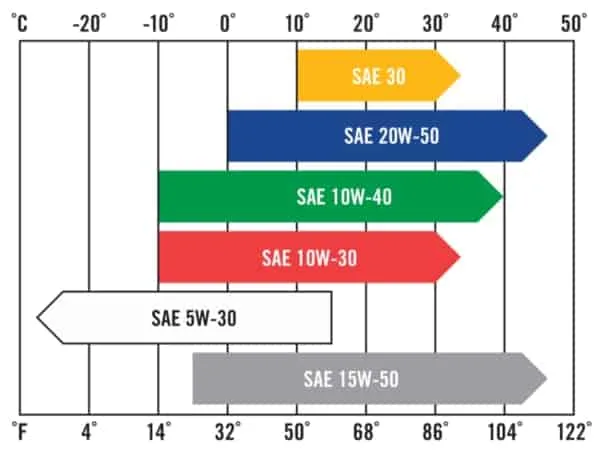You know how important it is to complete routine maintenance on your lawn mower. You changed the engine oil and now it’s smoking. You thought you were doing a good thing by changing your oil, but now it is starting to smoke. What can be causing this?
A lawn mower begins to smoke after the oil is changed when oil has spilled on a hot engine or muffler, there is an insufficient level of oil in your crankcase or the wrong engine oil grade is used.
Most smoking problems from changing your oil can be corrected so you can get back to mowing your lawn. Just make sure you take safety precautions when working around your hot engine.

This post may include affiliate links. Purchases made through these links may provide a commission for us, at no extra cost to you. As an Amazon Associate, we earn from qualifying purchases.
Follow all safety instructions provided in your equipment operator’s manual before diagnosing, repairing, or operating. Consult a professional if you don’t have the skills, or knowledge or are not in the condition to perform the repair safely.
This is Why a Mower Starts Smoking After an Oil Change
Spilled Oil on Your Mower
When you changed your engine oil you may have dripped oil onto the engine or muffler. Oil will begin to burn off the component when it becomes hot causing smoke to roll off your mower.
Find the excess oil on the engine or muffler and remove it to eliminate the smoking.
Too Much Oil in the Engine Crankcase
Overfilling the crankcase with engine oil will cause your engine to smoke. Increased pressure builds as a result of too much engine oil. Oil can enter the cylinder through the valve train. When this happens, a bluish-white smoke is emitted when the oil burns in the cylinder.
This thick cloud of smoke can plug your air filter causing running issues because your engine isn’t able to get the clean air it needs. Check your air filter and your spark plug, and clean or replace them if needed.
Check your engine oil level using your oil dipstick. Remove the dipstick and wipe it clean with a clean cloth. Reinsert the dipstick and pull it back out looking at the dipstick for the level of the engine oil.
Make sure the oil level is within the full lines. If the oil is too high, remove the excess oil.
Remove a Little Engine Oil
You can remove the oil by loosening and quickly tightening the drain plug to only allow a little oil out of the engine. You can also remove oil from the oil filter or out of the oil fill area using a turkey baster or oil evacuator.
Once you have removed some oil, recheck the oil level on the dipstick. Remove or add a little oil until the level registers within the full lines on the dipstick.
Not Enough Oil in the Engine Crankcase
Not adding enough engine oil can cause your lawn mower to start smoking. Oil is needed to provide enough lubrication for the internal engine parts to move freely.
When there isn’t enough oil, friction builds among the moving parts causing your engine to overheat. Smoke is created when the heat becomes so extreme it burns engine oil and melts engine parts.
When your engine begins smoking because you didn’t add enough oil, you can attempt to correct the oil level. It is likely you have caused engine damage if smoking is the result of a low engine oil level.
I recommend having a small engine mechanic look at the engine in this case.
Wrong Engine Oil
The grade of engine oil is important to keep the engine properly lubricated. When using the wrong viscosity of oil, it can begin to burn and emit smoke. Always use the viscosity of oil recommended by the engine manufacturer.
Use air-cooled engine oil to help keep your engine cool. This is an oil that contains a high concentration of zinc that acts as a cooling agent. Regular engine oil, like the oil used in vehicles, doesn’t include much zinc because engines are cooled with liquid.
The ambient temperature while you are operating your mower can also affect the oil viscosity you must use. Most lawn mower manufacturers recommend using SAE30 or 10W-30 engine oil, but you may have to change your oil viscosity to 20W-50 when operating in higher temperatures.
Check out this chart provided by Kawasaki Motors that reflects the oil viscosity in relation to temperatures.

Still Having Problems with Your Lawn Mower?
Lawn mower ownership doesn’t come without its frustrations. Own a mower long enough, you are bound to run into many lawn mower problems including starting, smoking, leaking, cutting, and overheating.
For mower troubleshooting, check out my guide Common Lawn Mower Problems: Solved.
